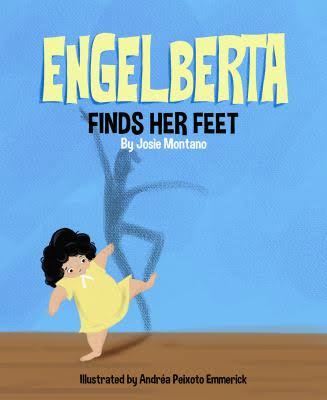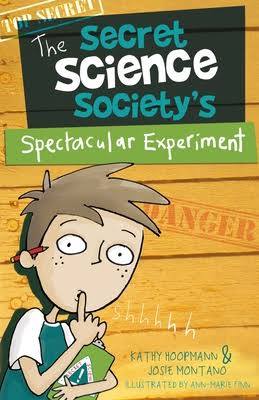Josie Montano
Engelberta Finds Her Feet
by Josie Montano
Illustrated by Andrea Peixoto Emmerick
ISBN 978-1-64372-113-2

Engelberta is a little girl who thinks she can’t dance. She visits Signor Le Steps, a dance teacher so passionate about his art that it’s simply not within him to imagine that dancing might be beyond the capability of the child before him, particularly under his expert tutelage. It doesn’t even occur to Signor Le Steps that Engelberta may not achieve her desire to ‘find her feet.’
Signor Le Steps begins with tap and progresses through all forms of dance from ballet to hip hop. Engelberta embraces each successive style by ‘turning up’ to her lesson in clothes that she believes exemplify the expression of that form of dance.
Often a phrase or a rhyming stanza is repeated in a children’s book to deliver repetition for effect, but this book is different. It is in using delightful language and stylistic terms to describe the actions of the two characters that the repetition young children love is provided. After all it would be boring to simply say Signor Le Steps entered the room for each lesson. And it would be equally as boring if Engleberta only ever dressed in a leotard.
Whereas Engelberta ‘turns up’ to every lesson unconfident and uncoordinated, Signor Le Steps ‘shuffles in’ for the tap lesson, ‘walks gracefully in’ for ballet, ‘glides in’ for ballroom, ‘moonwalks in’ for hip hop and so on.
Signor Le Steps is not perturbed by Engelberta’s inability to ‘find her feet’ with each style he introduces. He simply suggests they try another the following day. So Engelberta ‘turns up’ in a tutu for ballet, in a feathery dress for ballroom, in bling for hip hop and so on until all styles of dance have been attempted.
Signor Le Steps describes the terms of each dance style as he teaches, to jete, grand plie, and pirouette, to waltz and to break dance and groove. But poor Engelberta becomes despondent at the instruction to moon walk. She simply doesn’t think she can walk to the moon and despairs that she will ever ‘find her feet.’ Signor Le Steps does not give up. He flies into the room to teach her one last dance. How he enters the room on this occasion should indicate to the reader what that final dance will be. It doesn’t take much imagination to guess what Engleberta will bring when she is told that the lesson will be the Chicken Dance. Chaos ensues.
Colourfully illustrated, the artist has exemplified the grace and experience of Signor Le Steps by drawing him skinny and debonair and the awkwardness and ungainliness of Engelberta by drawing her chubby and anxious.
Worth the read for, and to, the dancer in your house.
The Secret Science Society’s Spectacular Experiment
By Kathy Hoopmann & Josie Montano
Published in 2019 by Wombat Books
ISBN 9-781925-563764
Mona likes to moan. Kiki is a worry-wart. Bart loves following rules. And Zane HATES following rules.
On the surface the authors have cleverly woven the children’s attributes into a delightful and humorous yarn for readers seven to ten years. However, on a deeper level, they have Mrs Mythos, the children’s teacher, purposely put children together that she knows need to learn from each other in order to cooperate.
The children must create and present a science experiment when each has significant learning challenges. Kiki needs to curb her anxiety and participate with a more positive attitude. Bart, who has autism, is compelled to accept the shortcomings of the others in order to concentrate on his tasks and Mona must learn to be more positive and less depressed in her efforts to contribute. Zane, having ADHD, finds it extremely difficult adhering strictly to the rules. He cannot help modifying the experiment – with spectacular results.
I smiled frequently throughout this book and I think children who love science will be delighted by it.


